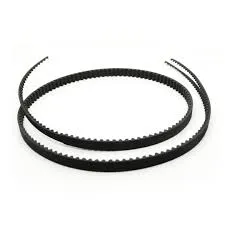- Arabic
- French
- Russian
- Spanish
- Portuguese
- Turkish
- Armenian
- English
- Albanian
- Amharic
- Azerbaijani
- Basque
- Belarusian
- Bengali
- Bosnian
- Bulgarian
- Catalan
- Cebuano
- Corsican
- Croatian
- Czech
- Danish
- Dutch
- Afrikaans
- Esperanto
- Estonian
- Finnish
- Frisian
- Galician
- Georgian
- German
- Greek
- Gujarati
- Haitian Creole
- hausa
- hawaiian
- Hebrew
- Hindi
- Miao
- Hungarian
- Icelandic
- igbo
- Indonesian
- irish
- Italian
- Japanese
- Javanese
- Kannada
- kazakh
- Khmer
- Rwandese
- Korean
- Kurdish
- Kyrgyz
- Lao
- Latin
- Latvian
- Lithuanian
- Luxembourgish
- Macedonian
- Malgashi
- Malay
- Malayalam
- Maltese
- Maori
- Marathi
- Mongolian
- Myanmar
- Nepali
- Norwegian
- Norwegian
- Occitan
- Pashto
- Persian
- Polish
- Punjabi
- Romanian
- Samoan
- Scottish Gaelic
- Serbian
- Sesotho
- Shona
- Sindhi
- Sinhala
- Slovak
- Slovenian
- Somali
- Sundanese
- Swahili
- Swedish
- Tagalog
- Tajik
- Tamil
- Tatar
- Telugu
- Thai
- Turkmen
- Ukrainian
- Urdu
- Uighur
- Uzbek
- Vietnamese
- Welsh
- Bantu
- Yiddish
- Yoruba
- Zulu
Des . 11, 2024 10:50 Back to list
Durable Rubber Pk Belt for Optimal Performance in Various Applications
Understanding Rubber PK Belts A Comprehensive Guide
Rubber PK belts, commonly known in industrial circles as Poly-V or multi-V belts, are pivotal components in various mechanical systems. These belts are characterized by their unique construction, typically comprised of high-quality rubber and reinforced with fibers, allowing them to effectively transmit power while maintaining flexibility. In this article, we will delve into the characteristics, applications, advantages, and maintenance of rubber PK belts, illustrating why they are a favored choice for many engineers and manufacturers.
Characteristics of Rubber PK Belts
Rubber PK belts are designed with multiple grooves that run longitudinally along the length of the belt, which enhances their grip on pulleys and reduces slippage. This design is not just aesthetic; it plays a critical role in power transmission. The precision grooves ensure that the belt fits snugly onto the pulleys, allowing for efficient transfer of motion from one component to another.
Additionally, rubber PK belts exhibit a high level of elasticity. This elasticity enables them to accommodate variations in load and drive speed while maintaining optimal performance. The rubber material used is often resistant to abrasion, heat, and oil, making these belts suitable for a variety of environments, from automotive engines to industrial machinery.
Applications of Rubber PK Belts
The versatility of rubber PK belts ensures that they find applications across numerous industries. In automotive engineering, they are widely used in engines to drive essential components such as alternators, water pumps, and air conditioning compressors. Their ability to handle dynamic loads makes them ideal for use in vehicles where performance and reliability are critical.
In industrial settings, rubber PK belts are invaluable in conveyor systems, where they facilitate the seamless movement of materials. They are employed in manufacturing processes, allowing for the distribution of products in factories and warehouses. Furthermore, these belts are utilized in agricultural machinery, power tools, and HVAC systems, demonstrating their broad utility.
Advantages of Rubber PK Belts
rubber pk belt

One of the primary advantages of rubber PK belts is their efficiency in power transmission. The multi-groove design minimizes energy loss while maximizing torque transfer, which helps in reducing operational costs. Additionally, their flexibility allows for smooth operation, even in systems where space is a constraint.
Another noteworthy benefit is their durability. The robust construction of rubber PK belts ensures longevity, which translates to reduced maintenance costs and less frequent replacements. This resilience also makes them suitable for challenging environments where other belt types might fail.
Moreover, the ease of installation and removal of these belts makes them user-friendly. Technicians can quickly replace or service a rubber PK belt, minimizing downtime in production or operation.
Maintenance of Rubber PK Belts
To ensure the optimal performance of rubber PK belts, proper maintenance is essential. Regular inspection for signs of wear, fraying, or cracking can help identify potential issues before they lead to belt failure. It’s also advisable to check the alignment of pulleys, as misalignment can cause uneven wear and premature failure of the belt.
In addition, keeping the belt clean from debris and contaminants is crucial. Dirt and oil can compromise the grip of the belt, resulting in slippage and efficiency loss. Lubrication should be avoided directly on the belt, as it can degrade rubber over time.
Conclusion
In summary, rubber PK belts are integral to modern mechanics and engineering, offering a reliable solution for power transmission across a range of applications. Their unique characteristics, combined with their efficiency and durability, make them a preferred choice in both automotive and industrial settings. With proper maintenance, these belts can provide exceptional performance and longevity, confirming their status as an essential component in various mechanical systems. As industries continue to evolve, the demand for high-quality rubber PK belts is expected to grow, solidifying their role in the future of engineering.
-
Korean Auto Parts Timing Belt 24312-37500 For Hyundai/Kia
NewsMar.07,2025
-
7PK2300 90916-T2024 RIBBED BELT POLY V BELT PK BELT
NewsMar.07,2025
-
Chinese Auto Belt Factory 310-2M-22 For BMW/Mercedes-Benz
NewsMar.07,2025
-
Chinese Auto Belt Factory 310-2M-22 For BMW/Mercedes-Benz
NewsMar.07,2025
-
90916-02660 PK Belt 6PK1680 For Toyota
NewsMar.07,2025
-
drive belt serpentine belt
NewsMar.07,2025

